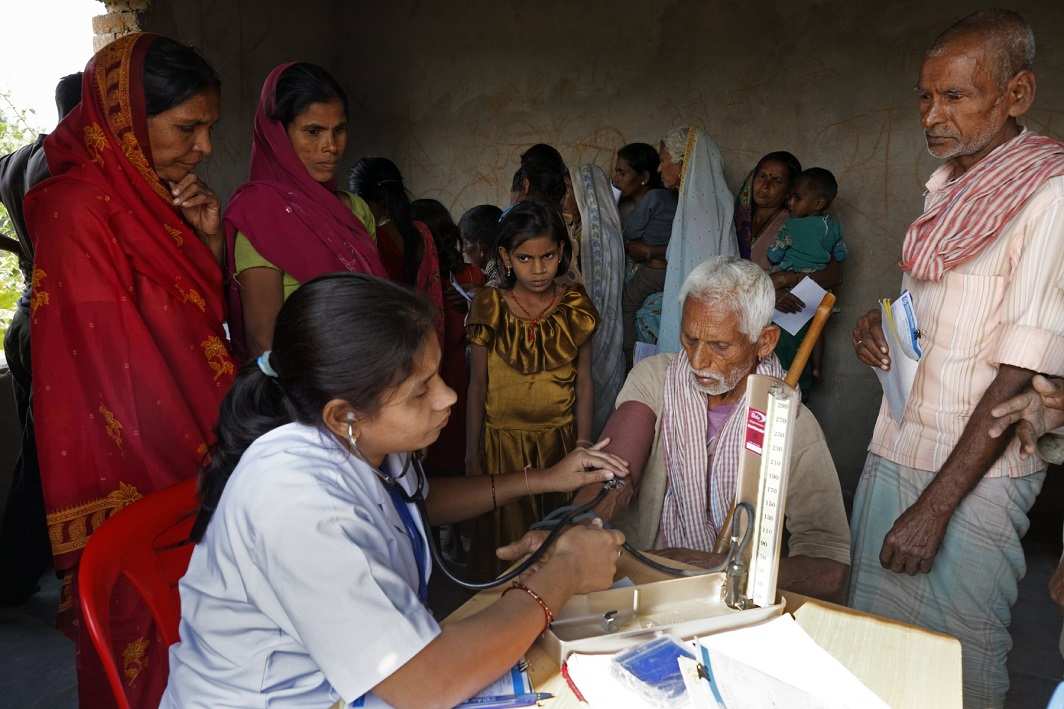
The new policy announced by the government is tilted in favour of this sector providing universal health coverage. This is a clear departure from the established norm that the state is central to providing medical services
~By Dinesh C Sharma
The new National Health Policy (NHP) announced by the government on March 15 promises every citizen a healthy future. Together with the announcement made in the budget speech about time-bound elimination of diseases such as tuberculosis and kala-azar, it is being projected as the biggest health initiative of the Modi government. But its critics say that it is tilted in favour of the private sector and does not focus on increasing public investment in health.
The first draft of the policy was placed in the public domain on December 2014 and has been the subject of consultations with state governments and the Central Council for Health and Family Welfare. Since the draft was released by the present government, it is supposed to reflect its thinking. The previous UPA government had established a high-level experts group on Universal Health Coverage (UHC) and had committed to implement the report’s recommendations.
The UHC, as defined by the World Health Organisation (WHO), implies the government makes available a minimum set of health services including medicines to all citizens. Since the role of the state is central to the concept of UHC, it is deemed necessary to strengthen primary care through new and additional investments. The new policy swears by UHC but it has proposed its own definition which, in fact, goes against the well-accepted concept of universal health.
The policy assures “availability of free, comprehensive primary health care services for all aspects of reproductive, maternal, child and adolescent health and for the most prevalent communicable, non-communicable and occupational diseases”. However, the state will not do this. Instead, delivery of health care services will be linked to a “health card” to enable every family to have access to a doctor of their choice from amongst those volunteering their services. For ensuring improved access and affordability of quality secondary and tertiary care services, it is proposed to use “a combination of public hospitals and well measured strategic purchasing of services in health care deficit areas, from private care providers”.

The second point on which the policy falls short of expectations is the need to increase health expenditure as a percentage of the Gross Domestic Product (GDP). The policy proposes raising public health expenditure to 2.5 percent of the GDP by 2025 which, it says, is “a potentially achievable target”. The first draft issued in 2015 had mentioned the target year as 2020. At present, India spends just 1.15 percent of GDP as public health expenditure.
The national health policy says “funds available under CSR would be leveraged for well-focused programmes aiming to address health goals”.
In addition to shifting the goal post, the policy is now talking about a greater spending by state governments. Funds will be released based on a system of incentives, development indicators and capacity of states to spend. Otherwise, general taxation will remain the predominant means for financing health care. Like in providing care, for funding too, the government will look to the private sector. The policy says “funds available under Corporate Social Responsibility (CSR) would be leveraged for well-focused programmes aiming to address health goals”.
In addition to “strategic purchasing of services” from the private sector and seeking private funds through CSR, the policy wants the government to further enhance the role of this sector. One of the key objectives of the policy is to “influence the operation and growth of the private healthcare sector and medical technologies” to ensure alignment with public health goals. The government will enable private sector contribution “to making health care systems more effective, efficient, rational, safe, affordable and ethical”. The policy claims that “strategic purchasing” of services from the private sector by the government to “fill critical gaps in public health facilities would create a demand for private health care sector, in alignment with the public health goals”.
Private sector engagement will go beyond contracting and purchasing, the policy says. Private providers in rural areas or regions with under-serviced communities will be given opportunities. The idea is to use such private providers for tasks such as disease notification and surveillance, sharing and supporting laboratory services for identification of drug resistant tuberculosis or other infections and supplying restricted medicines needed for special situations. “This would greatly encourage such providers to do better,” the policy says.

Overall, the policy brought in by the NDA government is tilted in favour of a greater role of the private sector in the provision of health services across the spectrum, and does not argue forcefully in favour of enhancing public investment in health. While the role of private sector in a large country like India can’t be undermined, it can’t be given the role of primacy. At a time, when many countries in the world, including those in Asia are moving towards a genuine UHC framework led by public sector, India is moving towards a system dominated by the private sector without any significant regulation or quality control. The implementation of this policy will further privatise Indian health system, which is already among the most privatised systems in the world. This certainly does not augur well for health and the well-being of people.

